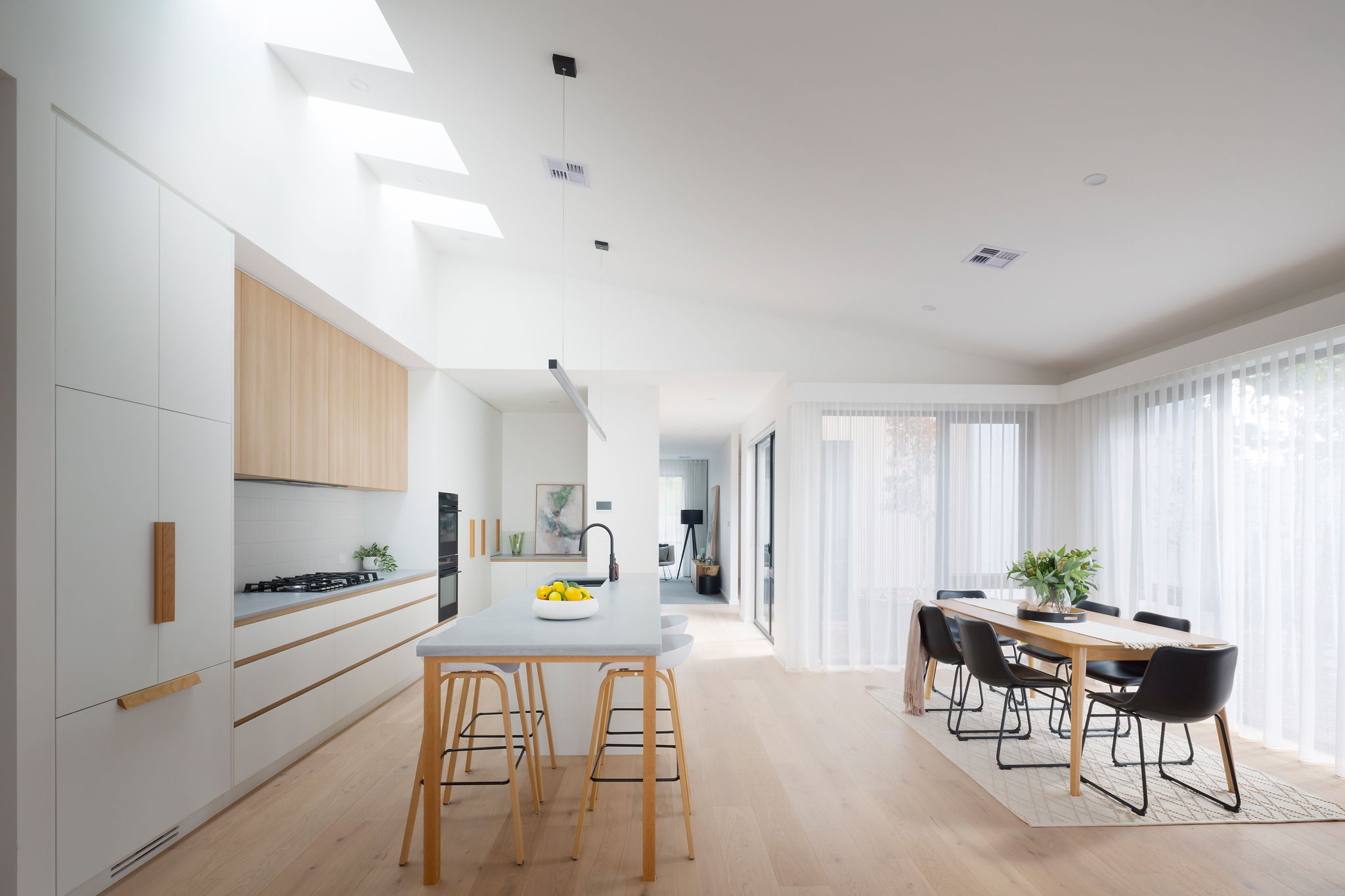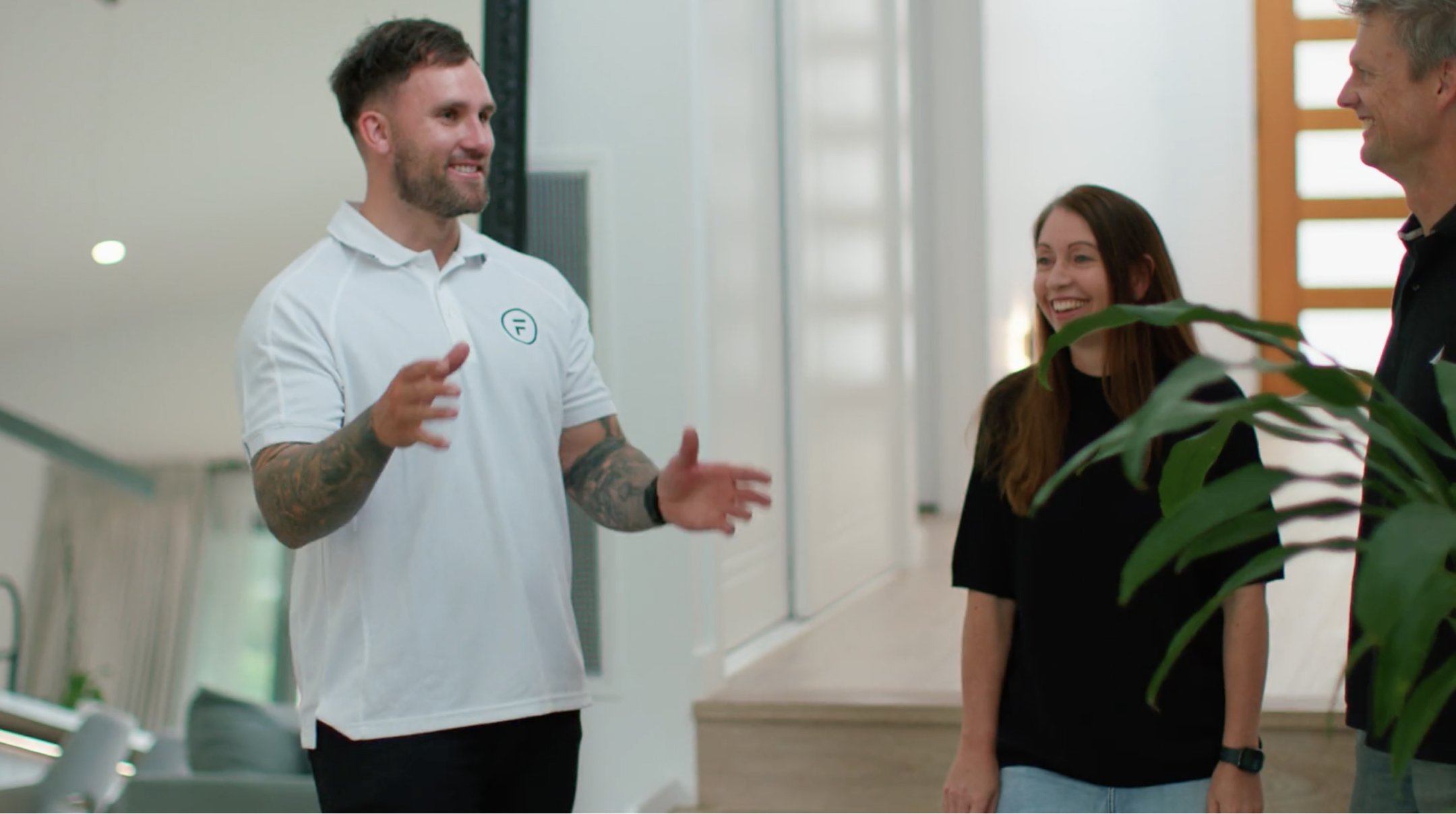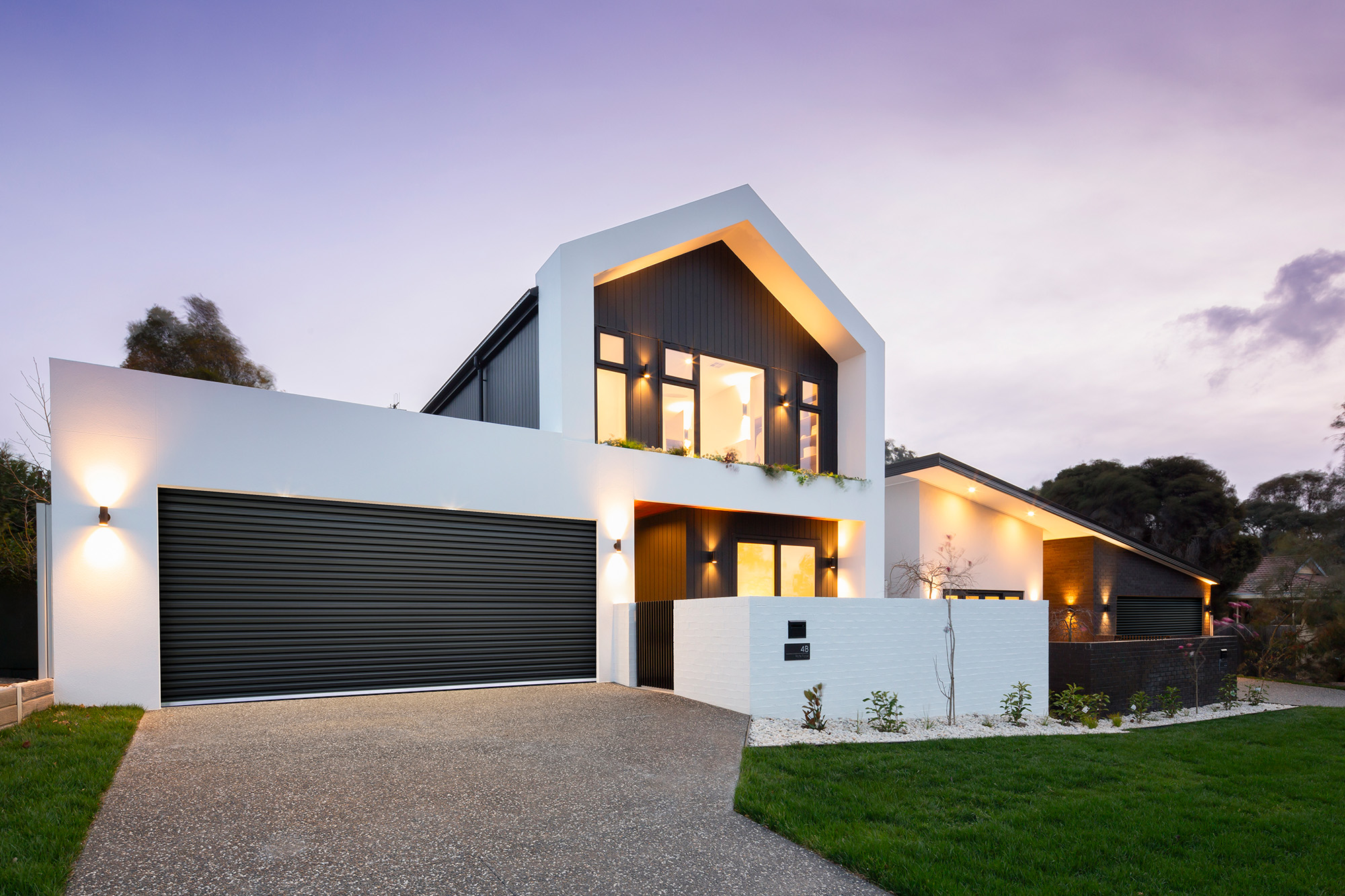Project Solace: A healthier take on energy efficient homes

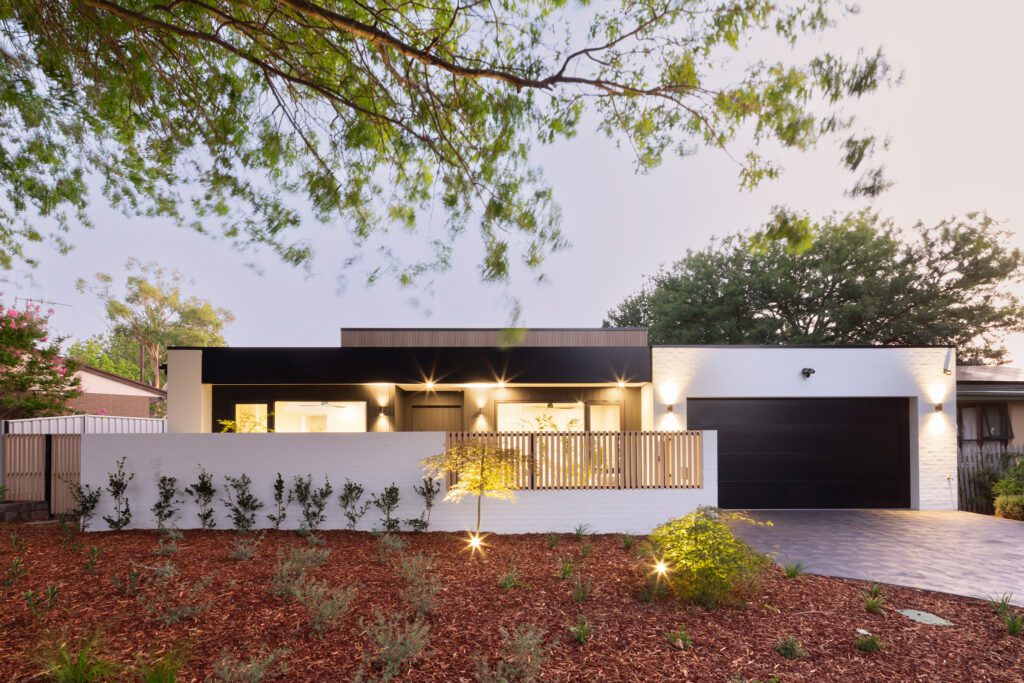
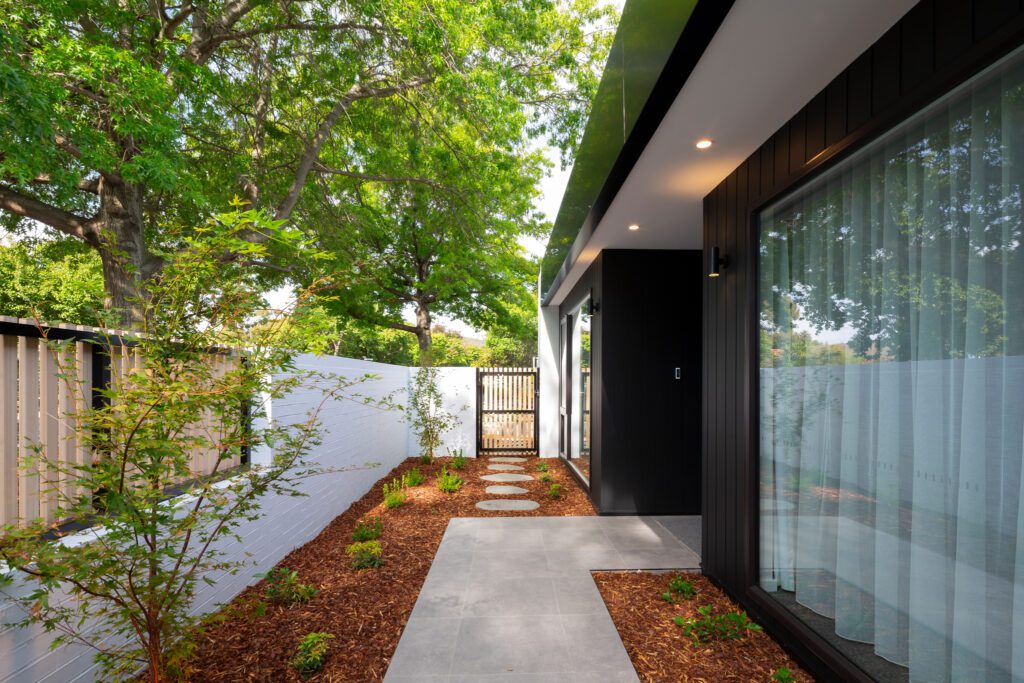

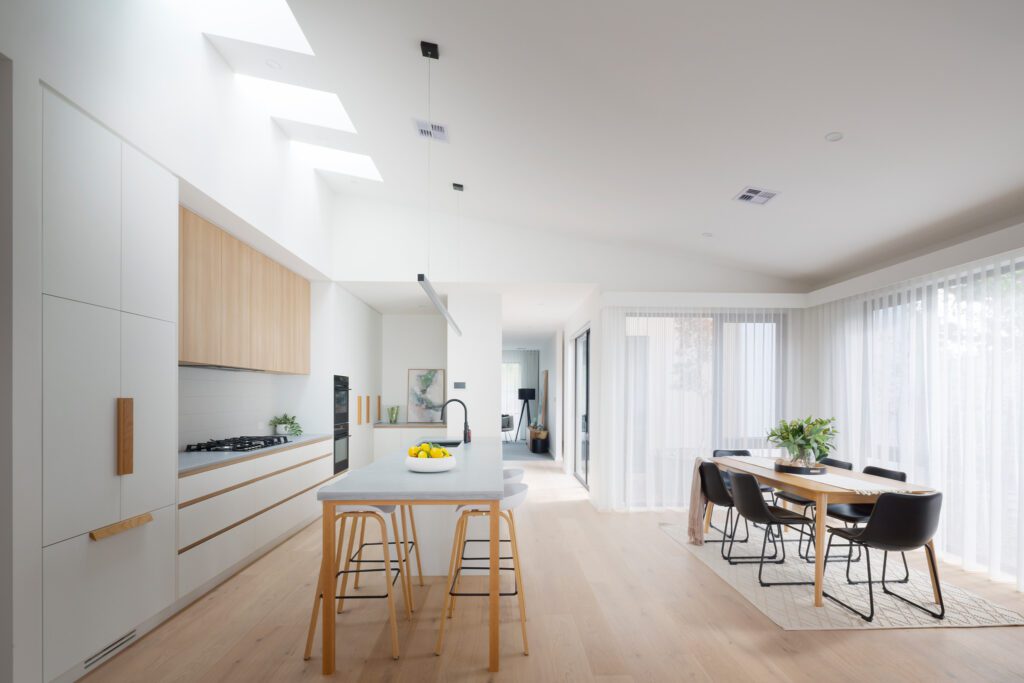

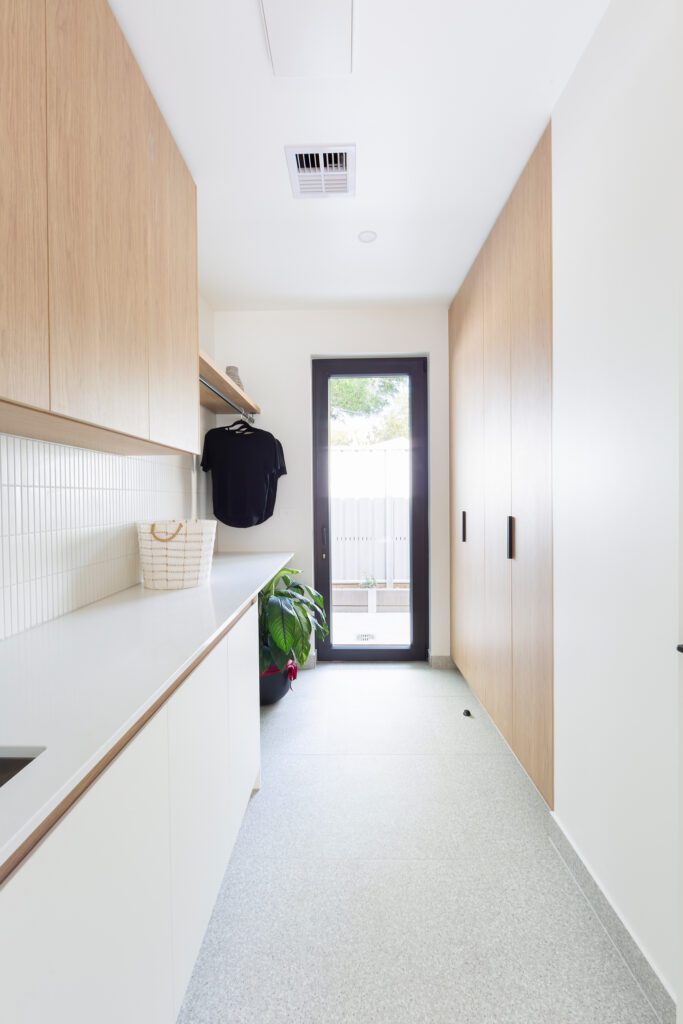
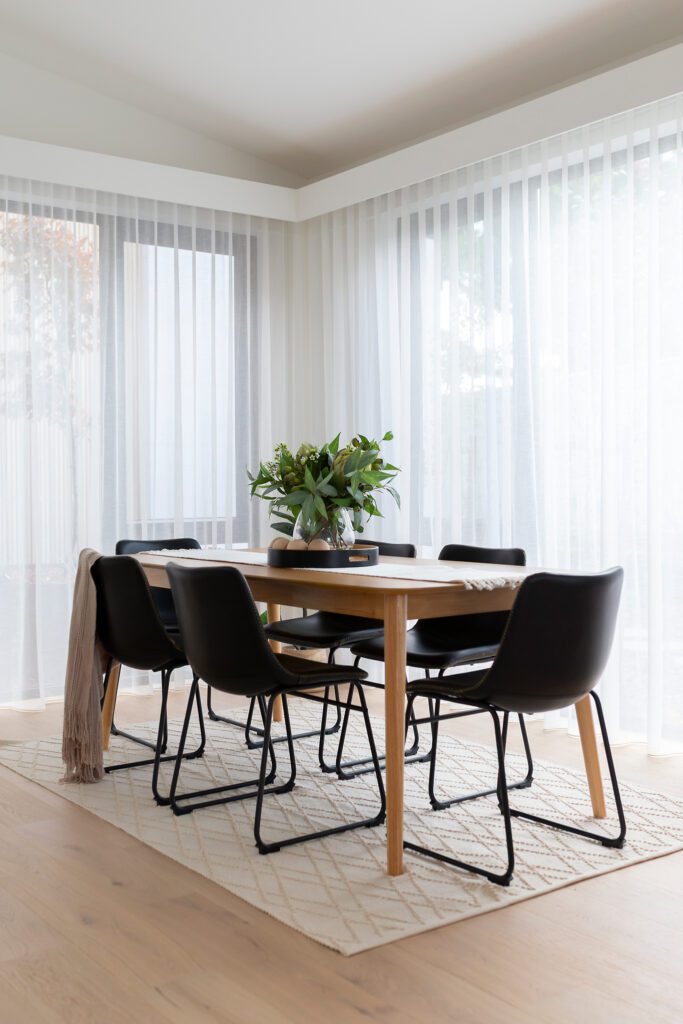

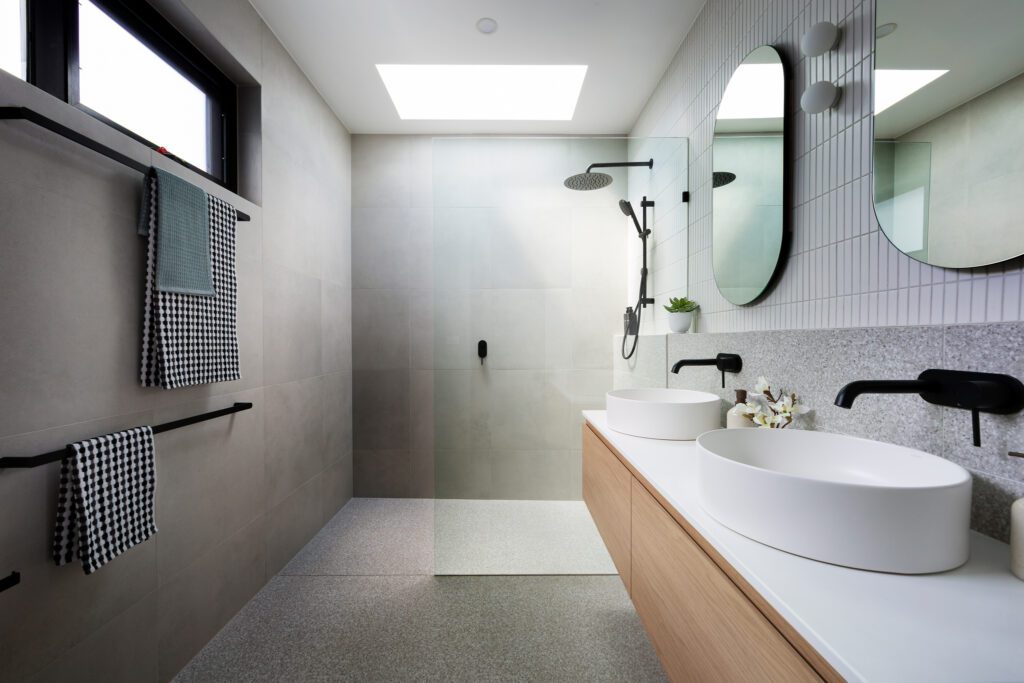
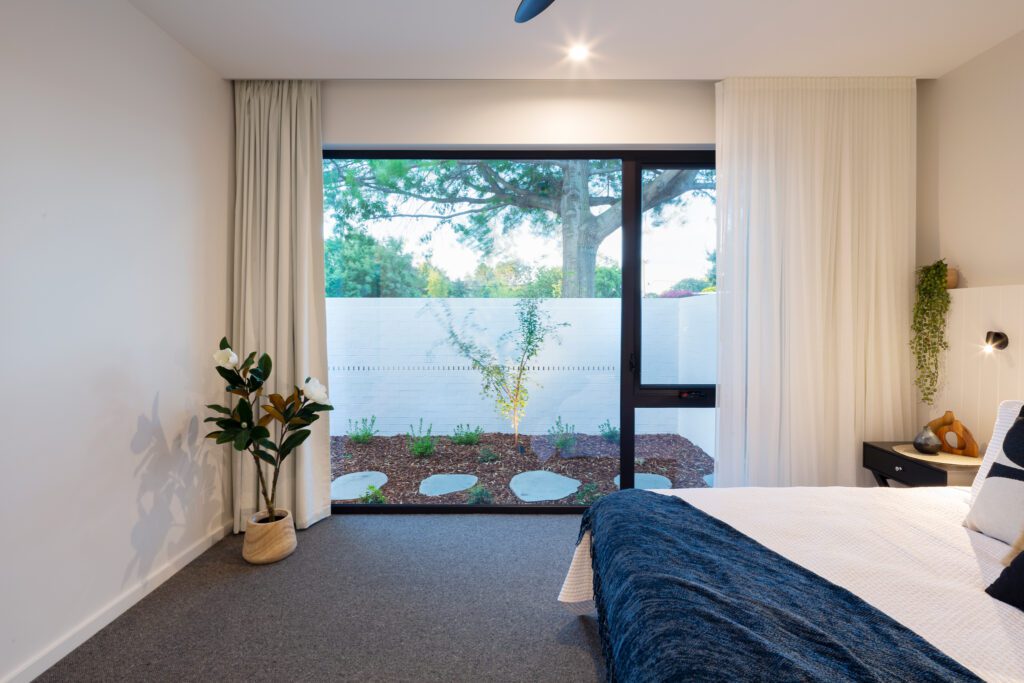
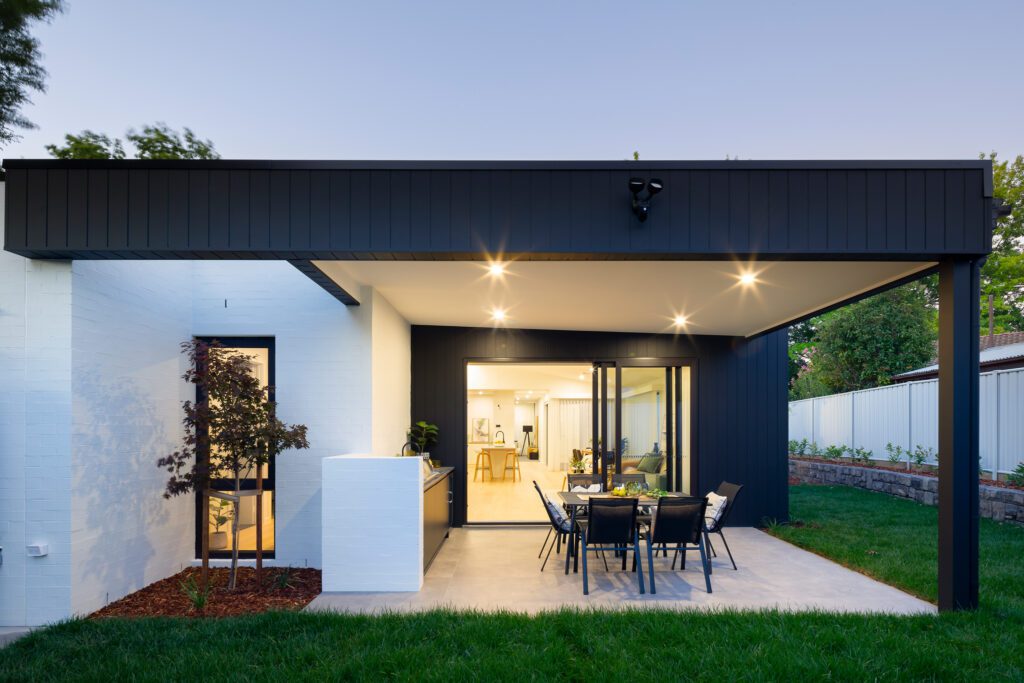

Highlights
Project Type:
Knockdown rebuild
Project location:
Watson
Timeline:
Delivered in just 9 months
Sustainability:
- 70% of original home materials recycled
- Pro Clima vapour-permeable wall and roof wraps
- UPVC thermally broken double-glazed windows
- R7 insulation batts (well above minimum spec)
- Mechanical heat recovery ventilation (HRV)
- Silica-free concrete benchtops
- Low-VOC paint and adhesives
- 13kW solar system + 5000L rainwater storage
Energy Performance:
7.8 Star Energy Efficiency Rating (EER)
Set on a leafy street in Canberra’s inner north, Project Solace isn’t just another new build — it’s a deliberate step forward in how we think about living. With a 7.8-star energy rating and a layered approach to sustainability, this home shows what’s possible when you build beyond the minimum.
As Canberra transitions to a 7-star minimum for new builds, energy efficient homes are becoming the norm. But this one goes further — blending performance with beauty, airtightness with breathability, and health with craft.
A home years in the making
Some homes come together on paper. This one came together over years of conversation.
We first met Chad — the homeowner — back in 2020 when he visited one of our completed developments in Lyons. We hit it off straight away. Over the next four years, we stayed in touch. No pressure. Just good chats, steady trust, and shared excitement about what might one day be possible.
By the time he and Cassie were ready to build, they already had the block — bought in 2019 before the boom — and a clear intent: to create a home where they could settle, grow, and start a family. The site had great bones: north-facing, well-positioned, and surrounded by established trees. But the design process brought its own challenges — we needed to balance light, orientation, and energy performance across the seasons.
We worked closely with Studio 187 to find the sweet spot. One that allowed sunlight to pour in during winter, while remaining cool and shaded through summer. We thought through every angle — where the eaves landed, how glazing was used, what materials would support both thermal comfort and long-term wellbeing.
That kind of attention is the foundation of true energy efficient homes.

Why Canberra needs energy efficient homes
Canberra’s climate is no joke — freezing mornings, blistering summers, and wild swings in between. That’s why energy efficient homes in this region aren’t just a nice-to-have. They’re essential.
With Project Solace, we used passive solar design principles to make the most of the block’s northern aspect. High-performance windows, roof wraps, and insulation keep warmth in during winter and heat out in summer — all while reducing the reliance on ducted systems or artificial climate control.
And with a mechanical HRV system bringing in filtered air year-round, the home stays fresh, dry and breathable — even with an airtight envelope.
A build rooted in care and connection
Chad and Cassie weren’t just clients — they were collaborators.
They were across every detail. At first, I’ll admit, the level of communication took me by surprise. But as we moved through the process, I saw the value in it. That level of engagement meant fewer surprises, clearer expectations, and a finished home that looked and felt exactly right.
Chad would often swing past the site — not to check up, but to check in. He loved seeing the house take shape, understanding the steps, sharing in the process. When we were on site, we’d invite him in for a quick walkthrough. And on Fridays, he started showing up with pizzas for the crew.
That kind of relationship changes a build. It becomes more than a transaction — it becomes a shared achievement.
Above standard, every step of the way
This wasn’t a home built to meet minimums. It was built to perform.
Pro Clima vapour-permeable wraps
Installed on all external walls and the roof, these breathable membranes let moisture escape without letting wind or water in — protecting the structure and improving air quality.
Silica-free concrete benchtops
A durable, low-tox alternative to engineered stone — safer for trades and future residents, without compromising aesthetics.
Mechanical ventilation with heat recovery (HRV)
This smart system delivers constant fresh air while retaining heat in winter. It improves air quality, reduces humidity, and keeps the home feeling balanced and clean.
R7 insulation + thermally broken windows
A step above the typical spec, these inclusions dramatically reduce thermal bridging and energy loss — essential in Canberra’s extreme seasonal shifts.

Designed to settle in, not stand out
Project Solace doesn’t scream for attention — and that’s exactly the point. It sits confidently on Molesworth Street, quietly nestled into its surroundings. The street-facing façade has drawn nothing but kind words from neighbours, some of whom look out to it every day.
That sense of belonging was important to us — to create a home that performed incredibly well, but never at the expense of presence, texture or tactility. And judging by the response from the street, we’d say it landed just right.
Thoughtfully detailed, inside and out
We didn’t cut corners. We cut frames by hand.
From 4.4 metre ceilings to recessed cabinetry and custom joinery, every detail was considered. The home was built on reactive clay soil, requiring deep screw piers and a raft slab system — but our team moved fast and carefully, delivering in just 9 months from knockdown to handover.
Even the demolition was deliberate: 70% of the original home was recycled or repurposed, including timber, bricks, concrete and steel. Watch the demolition process below.
Healthy homes start with better choices
Energy efficiency isn’t just about stars and systems. It’s about how a home feels.
We used:
- Low-VOC paints and adhesives to reduce indoor air pollution
- Airtight construction paired with proper ventilation to combat condensation
- Natural timber framing for breathability and reduced thermal bridging
- Low-EMF design principles for long-term wellness
The result is a house that not only performs — but supports wellbeing, reduces allergens, and helps prevent mould or air nasties.

For people who care how things are built
Chad and Cassie were first-time builders, but they knew what they wanted. They visited the site often (with pizza in hand), asked good questions, and treated our crew like part of the process.
This home has now gone to auction — and while we’re proud to see it out in the world, we’re even more excited about what comes next. Chad and Cassie have already asked us to build again — this time in Ainslie.
That trust, built through shared vision and open communication, is what we care about most. It’s the kind of partnership we hope every project brings.
FAQs
As of recent NCC updates, the minimum for new homes in the ACT is 7 stars. That means better insulation, smarter orientation, and more efficient glazing are now required — but there’s still a big gap between minimum and exceptional.
Project Solace adds layers of performance beyond compliance: HRV ventilation, vapour-permeable wraps, thermal bridging mitigation, and low-tox materials all combine to deliver long-term comfort and health.
It’s a breathable membrane that lets internal moisture escape while protecting the structure from water and wind. Without it, airtight homes can trap condensation — leading to mould and damage.
Silica exposure is a major risk for trades. We used silica-free concrete benchtops to prioritise safety without sacrificing durability or design.
You can improve an existing home with upgrades like better insulation, double glazing, wraps and HRV systems — though nothing beats designing it in from the start.
